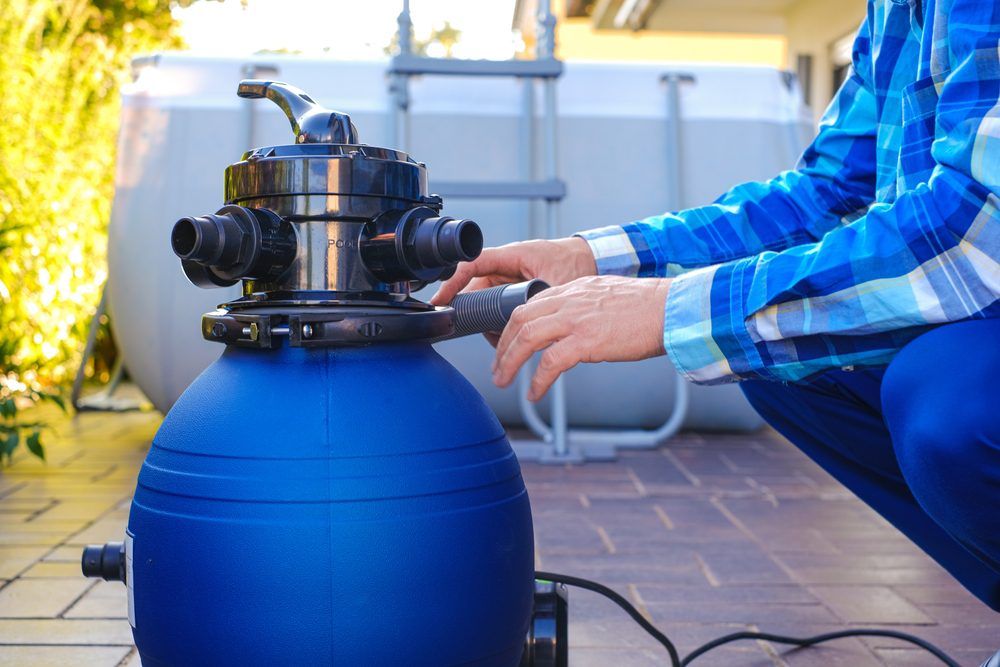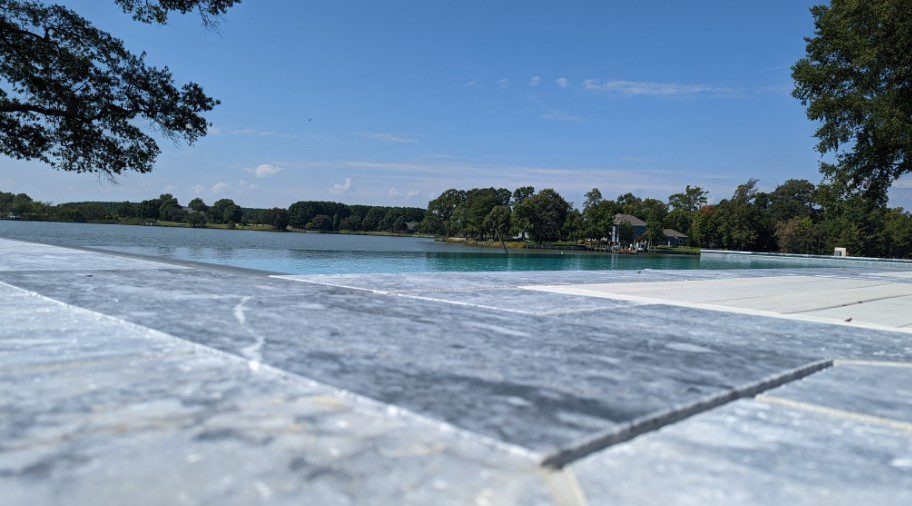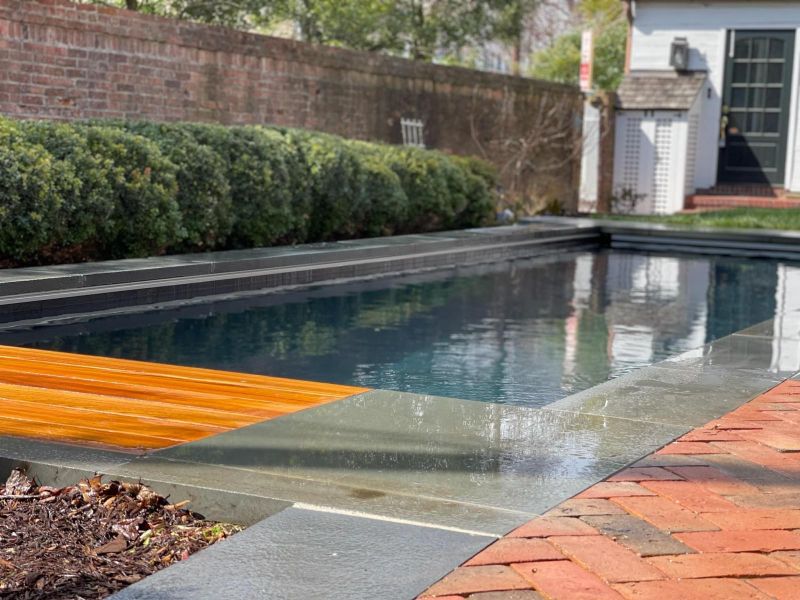How Long Do Pool Filters Last?: Types of Pool Filters

How Long Do Pool Filters Last?The Importance of Pool Filters For pool owners, maintaining clean and clear water is vital, and much of this responsibility falls on the pool filter. But one of the most common questions new and experienced pool owners alike ask is: “How long do pool filters last?” Understanding the lifespan of your pool filter and its components, such as sand and cartridges, is crucial to keeping your swimming pool in top condition. Lifespan of Pool Filters The lifespan of pool filters depends on several factors including the type of filter, usage, maintenance, and pool size. Generally, pool filters can last between 3 to 7 years. However, this can vary significantly based on how well the filter is maintained and the type of filter you are using. Types of Pool Filters and Their Maintenance There are three main types of pool filters: sand, cartridge, and diatomaceous earth (DE). Each type requires different maintenance routines which can affect their overall lifespan. Sand Filters Sand filters have become popular for their simplicity and effectiveness. They filter out debris and impurities by allowing pool water to pass through a bed of sand. But, how often should you change the sand in your pool filter? Typically, it’s recommended to replace the sand every 7 to 10 years. This ensures the filter remains effective, as over time, the sand becomes smooth and less efficient at trapping particles. The sand filter tanks usually last between 7 and 20 years. Cartridge Filters Cartridge filters use a paper-like material to trap debris in the water. These filters are favored for their ease of maintenance and higher efficiency. How often to clean the pool filter if you’re using cartridges? It’s advisable to clean the cartridges every few weeks or as needed depending on pool usage and load of impurities. A deep clean should be done every 3 to 6 months, and the cartridge filter elements usually need replacing every 3-5 years depending on the conditions they’re subjected to. The cartridge filter itself usually lasts 15-20 years. Diatomaceous Earth (DE) Filters DE filters provide the highest level of filtration by using a natural substance called diatomaceous earth. DE filters are capable of filtering out much smaller particles than sand or cartridge filters. Like sand filters, DE requires backwashing and the DE medium itself should be replenished after every backwash. Typically, a complete change of DE is necessary every year, with frequent backwashing and replenishment of the earth after each backwashing. How Often to Replace a Pool Filter Even with diligent cleaning and maintenance, eventually, the physical parts of the filter will degrade and require replacement. How often to replace a pool filter entirely depends on the condition of the filter and the type. As a rule of thumb, carefully inspect your filter’s condition during routine cleanings and consult with a professional to assess whether a replacement is necessary. It is typical to expect to start replacing parts on a filter at the 10 year mark, and expect filters that are between 15-20 years old to potentially need to be replaced completely. Routine Maintenance is Key Maintaining your pool filter is crucial to ensuring your pool remains a clean, enjoyable space. By understanding the maintenance needs of your filter type, you can significantly extend its lifespan and improve its efficiency. Regular cleaning, timely replacement of sand or cartridges, and an occasional full filter replacement will help you keep your pool in pristine condition year after year. Service Your Pool with Coastal Pools Maintain your pool equipment and filter with Coastal Pools! Coastal Pools is here for you with our team of expert technicians. Experience a tailored approach to pool service and lifelong care in Maryland or Delaware. Contact us online or at 410-827-0888 today and let’s build your dream oasis together.
What Is a Zero Entry Pool?: Pros and Cons

What Is a Zero Entry Pool? A zero entry pool, also known as a beach entry pool or zero depth pool, features a gradually sloping entrance that mimics the shoreline of a beach. Unlike traditional pools with stairs or ladders, the slope allows swimmers to walk directly into the water, with depth increasing gradually. This design enhances the visual appeal of the pool and adds a layer of accessibility and safety. Benefits of a Zero Entry Pool When summer heat waves hit, many homeowners fantasize about relaxing in a refreshing backyard pool, and the appeal of a zero entry pool is enticing. These pools stand out for their resort-style look and practical features. Below are the pros and cons to consider. Accessibility One of the most significant benefits of zero entry pool designs is their accessibility. These pools are ideal for families with young children, seniors, or anyone with limited mobility. The gentle slope allows for easy entry and exit without the need for ladders or steps, which can pose a risk for slips and falls. Aesthetic Appeal Zero entry pools bring visual elegance to your backyard. They often serve as the centerpiece of garden landscaping, offering a picturesque aquatic escape that resembles a natural beach. The design possibilities are vast, ranging from tropical themes complete with sand and palm trees to more minimalist approaches that focus on the elegance of the sloping entry. Versatile Use The shallow areas created by the zero depth entry are perfect for young children to play in under supervision, making it an excellent option for families. These areas can also be used for lounging in the water on a hot day, providing a cool, comfortable spot to relax or sunbathe. Drawbacks of a Zero Entry Pool While zero entry pools offer many luxuries, they also come with some limitations. Consider these potential drawbacks before deciding if this design is right for your space and lifestyle. Space Requirements Because the slope must be extended and gradual, these pools often require more space than standard designs, which can be a significant limitation for smaller properties. Maintenance Challenges The large shallow areas of zero entry pools may heat up more quickly, potentially promoting algae growth. The gradual slope can also make it harder to cover the pool completely, impacting water quality and energy efficiency. Limited Depth Flexibility While the shallow end of a zero entry pool is beneficial for safety and accessibility, it can limit activities that require deeper water, such as diving. They are also not ideal for swimming laps due to the lack of an edge at the end of the pool. Homeowners looking for a pool that supports a range of water sports might find the zero entry design limiting. The Allure of Zero Entry Pools Zero entry pools offer a unique blend of aesthetic beauty, accessibility, and family-friendly features that can make them an attractive option for many homeowners. However, the increased cost, potential maintenance issues, and spatial requirements are important factors to consider. Whether a zero entry or a traditional pool is the best choice will depend on individual needs, preferences, and the specific constraints of the property. By carefully considering these points, homeowners can make a well-informed decision that best suits their lifestyle and budget. If you’re considering a zero entry pool, working with an experienced custom builder like Coastal Pools ensures you get a design that fits your space, lifestyle, and budget. Let Coastal Pools Design Your New Zero Entry Pool Experience the height of luxury and relaxation with Coastal Pool’s custom pools! As the premier custom pool builder serving Maryland and Delaware, we’re committed to turning your outdoor dreams into reality. Our dedication to innovation, craftsmanship, and exceptional customer service ensures that your pool is not just a structure, but a lifelong investment in happiness. Contact us online or at 410-827-0888 today and join us in creating unforgettable memories and building lasting relationships—let’s bring your dream pool to life together.
How to Open a Pool for the Season

How to Open a Pool for the Season Opening a pool for the season is an exciting sign that warmer days are just around the corner. The process involves careful planning and execution to make sure that your pool is safe, clean, and ready for summer fun. Whether you’re a new pool owner or just need a refresher, here’s a comprehensive guide on how to open a pool for the season. When to Open Your Pool The ideal time for pool opening varies by location but generally coincides with consistent daily temperatures above 70°F. Opening your pool too late can lead to algae growth due to warmer temperatures triggering algae growth. Initial Preparation Before you dive into the how to open a pool, it’s essential to gather the necessary supplies and equipment. You’ll need a pool vacuum, a skimmer, a garden hose, a pool brush, a pole, and testing kits for pH, alkalinity, calcium harness, and sanitizer levels. Step 1: Remove and Clean the Pool Cover Carefully remove the cover, avoiding letting any debris fall into the water. Clean and dry the pool cover before storing it in a dry space to prevent mold and mildew. Also keep away from areas where rodents might nest as they will chew holes in the pool cover. Step 2: Inspect and Clean the Pool Once the cover is off, skim off any floating debris. Thoroughly brush and vacuum the pool walls and floor to remove any dirt and algae. This is crucial as initial removal of dirt, debris, and algae helps make the filter and chemicals work more efficiently once the pool is up and running. It also prevents long-term damage and keeps the pool looking its best. Step 3: Refill the Pool Top off the water level to ensure proper circulation. The water should reach the middle of the skimmer opening for optimal performance. If debris surfaces during this process, skim off the remaining debris. Step 4: Reconnect Your Equipment Reinstall any removed items such as ladders, diving boards, and pumps. Make sure all equipment is clean and in good working condition. Check for any maintenance issues from the previous season that need addressing. O-rings and gaskets have a tendency to dry out over the winter causing leaks. If this happens lubricate all seals and o-rings with a Teflon, or silicone base lubricant. Step 5: Balance the Water Chemistry One of the most critical steps in how to open a pool for the season involves balancing the water chemistry. What chemicals do I need to open my pool? Typically, you’ll need to adjust the pH, alkalinity, calcium hardness, and sanitizer levels. Start by adding shock and chlorine to the pool. Once chlorine levels start to rise you can begin balancing the rest of the pool chemistry. If pool is excessively dirty it may need to be shocked a few times before balancing other chemistry. Step 6: Run the Filtration System Once the chemicals are added, run the pool’s filtration system continuously for at least 24 hours. This helps distribute the chemicals evenly and filters out any remaining impurities. If pool starts off excessively dirty the filter may need to be cleaned a few times in the first weeks. Step 7: Monitor and Adjust After the initial filtration period, retest the water. Adjust the chemical levels as needed. This might need to be repeated several times until the water is perfectly balanced. It’s wise to have your pool water professionally tested at the start of the season and monthly thereafter. Simply bring a water sample to a pool expert who can assess its pH, alkalinity, calcium hardness, and chlorine levels. They may also recommend treatments such as shock, stabilizer, phosphate remover, metal treatment, or algaecide to prepare your pool for use. Continue running the filter and vacuuming for a few days. Once the water clears and chlorine levels stabilize, your pool will be ready for swimming. Make sure to test the water every week. How Long Does It Take to Open a Pool? The question of how long does it take to open a pool depends on various factors including the size of the pool, the initial condition of the water, and how well the pool was maintained during the off-season. Usually, the entire process can take anywhere from a few days to a week. Happy Swimming! Understanding how to open a pool properly at the start of the season can save you time, money, and hassle later on. By following these steps, you ensure that your pool remains a healthy and enjoyable place for everyone throughout the summer. Remember, regular maintenance is just as crucial as a good opening routine, so keep an eye on your pool’s condition throughout the season. Need Pool Services in Maryland or Delaware? Coastal Pools Can Help Dive into luxury with Coastal Pools! We’re dedicated to crafting exceptional pools, setting high standards in innovation, craftsmanship, and customer service. Our mission is to create unforgettable memories with unique pool designs tailored to your needs. Let us guide you through opening your pool—a lifelong investment in your happiness. Contact us today online or at 410-827-0888 and experience outdoor living at its finest.



